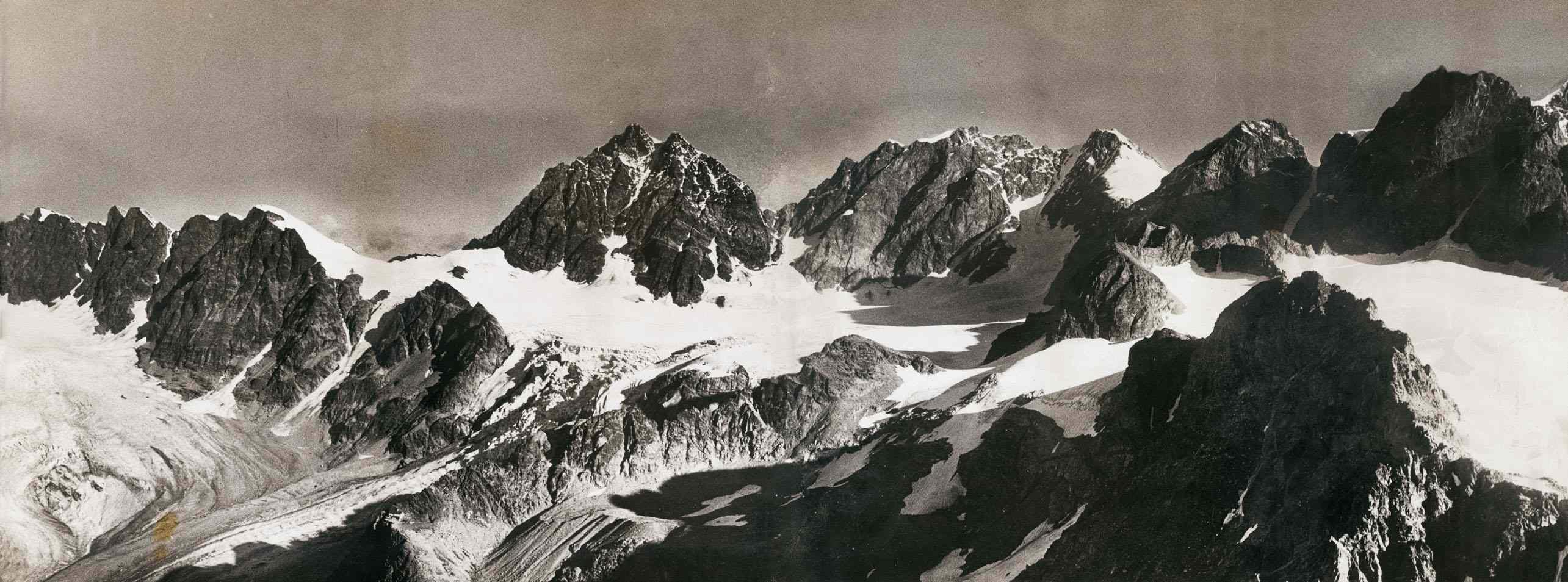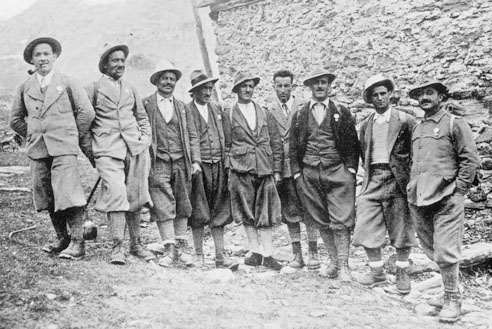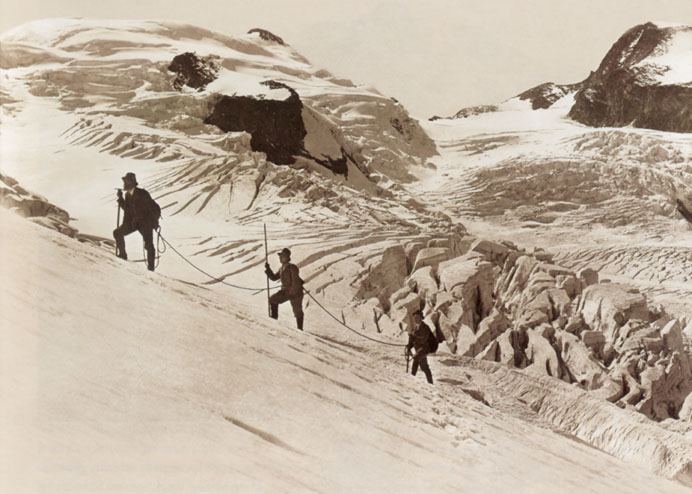by Michele Comi
The history of mountaineering in the Valmalenco is closely linked to a general exploration of the peaks in the Alpine range.
Until the first half of the 19th century, the highest summits of the mountain groups of Disgrazia, Bernina and Scalino were basically considered rather dangerous places to be avoided.
 Head of the Bernina range.
Head of the Bernina range.
Three centuries ago, it was considered pure madness to risk one's life to climb a mountain.
The idea that wild nature could hold an element of fascination just did not exist: for the culture of the time, nature was only worthy of interest if it expressed fertility.
In the Middle Ages, the highest peaks were traditionally believed to be home to the supernatural and to everything hostile and even inhabited by dangerous dragons.
They believed that a mere sneeze or the flapping of a bird's wings as it flew low over a snow-covered slope could cause an avalanche to break away.
It goes without saying that life in the mountains was regulated only by the need to survive of the local population, consisting mainly of shepherds and farmers.
 Group of guides in 1933.
Group of guides in 1933.
People rarely ventured above the highest Alpine pastures and only if there was a real practical need, such as for hunting or collecting medicinal herbs or searching for minerals.
The need for topographers to reach some of the highest peaks also began to develop.
Armed with their heavy theodolites, they used the surrounding peaks to calculate the height in order to draw up the first complete, topographical maps of the area.
This was the case of Pizzo Scalino 3,323 m, the unmistakeable pyramid overlooking the eastern part of our Valley. It was the first summit climbed by a group of Lombard topographers, working for the Austrians way back in 1830.
 Ascent of Bernina.
Ascent of Bernina.
The summit of Pizzo Bernina 4,050 m, the highest peak of the Rhaetian Alps and the easternmost four-thousander in the Alps, was conquered in September of 1850 by the Swiss topographer, Johann Coaz and his assistants. This was the crowning achievement of a long campaign of studies made on the massif.
As in other parts of the Alps, mountaineering in the Valmalenco began as a result of a passion for science.
Every mountaineer worthy of the name would never climb without measuring the boiling point of water on the summit!
At the same time, the mountains began to exert their extraordinary and often fatal attraction on the human spirit, and people began to climb them for the simple pleasure of doing so: vertical walls, desolation and danger soon became much sought after and appreciated!
From a mere geological contingent nature, from "monuments of the slow, intense work of the immense forces of nature over thousands of years" wrote Leslie Stephen (the first to climb Disgrazia), now transform into a universal instinct for high altitude, for the search for "pleasurable horror" and to a sportive comparison with nature.
The ascent of Mount Disgraziaby the Englishmen, Stephen and Kennedy with their guide from the valley, Anderegg and the servant, Cox, on 24 August 1862, definitively sanctioned the birth not only of mountaineering as we know it today and of Alpine tourism throughout the entire region.
The English travellers-explorers were amongst the greatest admirers of our mountains.
The great variety of environments they offer constitute an unequalled example of geodiversity, a quality which presupposes and integrates the biodiversity within the ecosystems.
The conquest of the peaks led to the need to build the first refuge huts: in 1880 Capanna di Corna Rossa and Capanna Scerscen (currently known as the Marinelli Bombardieri hut and the Desio hut).
In subsequent years, ascents of every slope and every ridge were to multiply.
The numerous climbs that followed one after another reflected the respective historic periods and clearly highlighted the technical innovations.
New mountaineering equipment led to increasingly daring and difficult ascents.
What remains is a great, enormous heritage where time and silence reign, elements which cannot be bought or even faked!